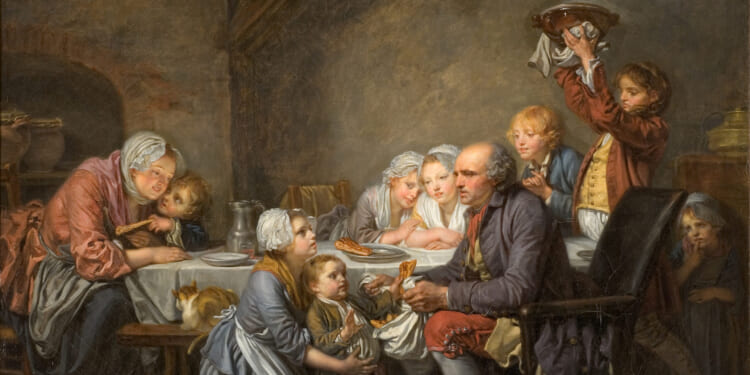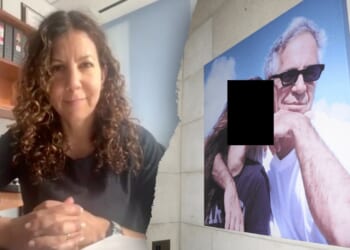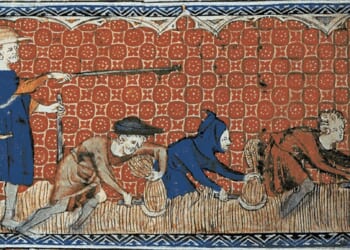The Petit Palais, one of Paris’s most agreeable museums and with a permanent collection open to the public free of charge, is renowned for its exhibitions featuring often overlooked artists. Jean-Baptiste Greuze (1725–1805) is a familiar name to lovers of eighteenth-century art but is largely unknown to the general public. As the wall text of the first room of “Childhood Illuminated” describes, Greuze, in his time “acclaimed by the public, courted by collectors, and adored by critics . . . is little known today.” Even those who have heard of him often have a biased view of an artist whom the exhibition presents as “one of the most important and daring figures of his time.”
In my youth, influenced by Kenneth Clark, the Sitwell brothers, and Denys Sutton’s Apollo, eighteenth-century French art meant Watteau and my father’s beloved Fragonard and Boucher. I discovered Greuze in Michael Levey’s survey of eighteenth-century painting Rococo to Revolution (1966), where Greuze was found guilty of “a confused appeal to sentimentality and lack of confidence in art that wasn’t supported by narrative.” The now underrated Levey moderated his condemnation by observing that Greuze proved “capable of apprehending reality in his often-excellent portraits.” Anita Brookner was also skeptical in her Greuze: The Rise and Fall of an Eighteenth-Century Phenomenon (1972). Both authors were writing at a time whose libertinism matched the eighteenth century’s. That may have affected their view of Greuze’s more mawkish elements, which can seem a quirk in taste.
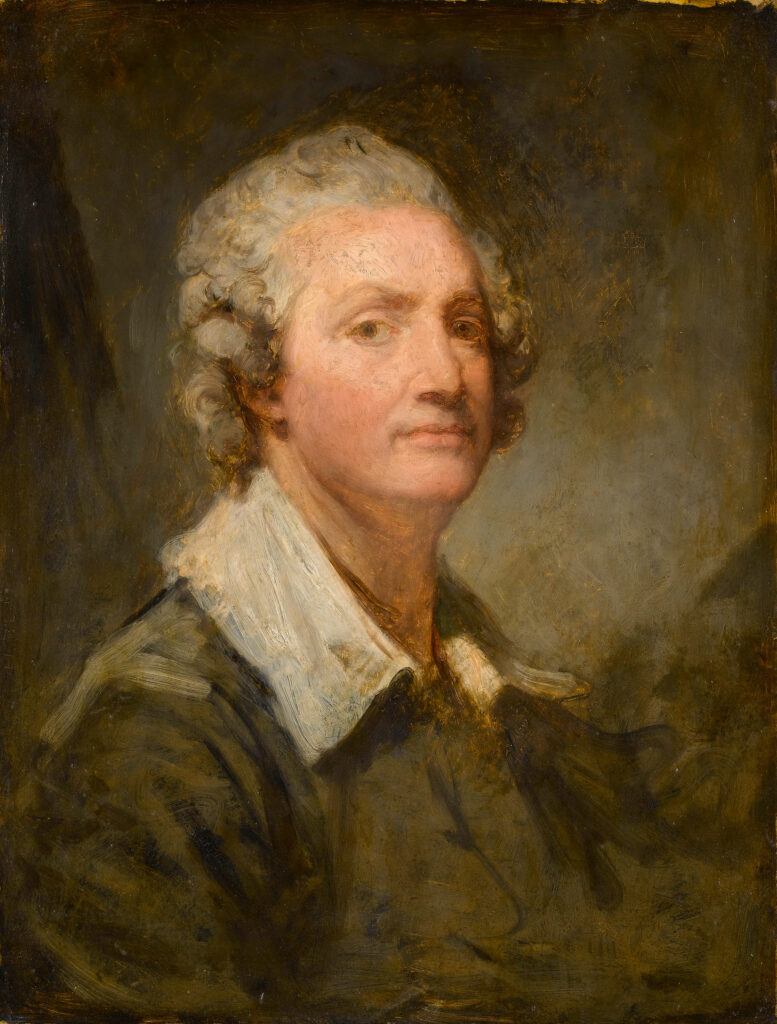
Jean-Baptiste Greuze, Self-portrait, 1760, Oil on wood, Louvre Museum. Photo: Thierry Le Mage.
Greuze’s reputation for excessive sentimentality helps explain why the artist is so little appreciated now but also why he was prized in the second half of the eighteenth century. His pictures of peasant family life, often packed with figures in crowded, messy rooms, enjoyed great success as engravings as well as paintings. They were in tune with the contemporary writings of Jean-Jacques Rousseau and Samuel Richardson. The novelist, art critic, and philosopher (the usual French term for a writer not quite in the first rank) Denis Diderot was Greuze’s greatest champion. Defending Greuze’s “morality in paint,” Diderot attacked Watteau and his Rococo followers, asking in 1763, “What, has not the pencil been long enough and too long consecrated to debauchery and vice? Should we not be satisfied to see it finally compete with dramatic poetry to touch us, to instruct us and to invite us to virtue?”
“Debauchery” is hardly the word to describe Watteau’s delicate art. Writing a century later, the Goncourt brothers exalted Watteau as the great poet of French eighteenth-century art, while detecting in Greuze’s art “a kind of corruption” and a sensuality “in its content and in its form, in its composition, its drawing, and its very brushstrokes.” Yuriko Jackall, the exhibition’s co-curator with the Petit Palais’ directors Annick Lemoine and Mickeal Szanto, points out that Greuze was as Rococo as Boucher. Greuze’s The Surprised Housewife (ca. 1760–65) in the exhibition’s final room, devoted to “lost innocence and broken dreams,” shows masculine claws clutching a helpless woman, in a style and with a use of color reminiscent of Fragonard’s. Yet the picture’s meaning, just as in the case of The Broken Eggs (1756) and The Bird-Watcher Tuning his Guitar (1757)—the sneaky-looking guitarist’s “birds” symbolizing females of his own species—is closer to Richardson’s Pamela than to Fragonard’s carefree dreams.
By the 1750s, many art collectors and much of the public had had enough of the sense that had dominated the century’s first half and were ready for helpings of sensibility, and eventually Romanticism. Sense and sensibility, however, are more intermingled in art and in life than one might at first assume. Richard Holmes showed in his Dr. Johnson & Mr. Savage that in Samuel Johnson’s penniless youth, before he was named a doctor of letters, the champion of sense could be seen wandering London’s streets, a Romantic figure avant la lettre.
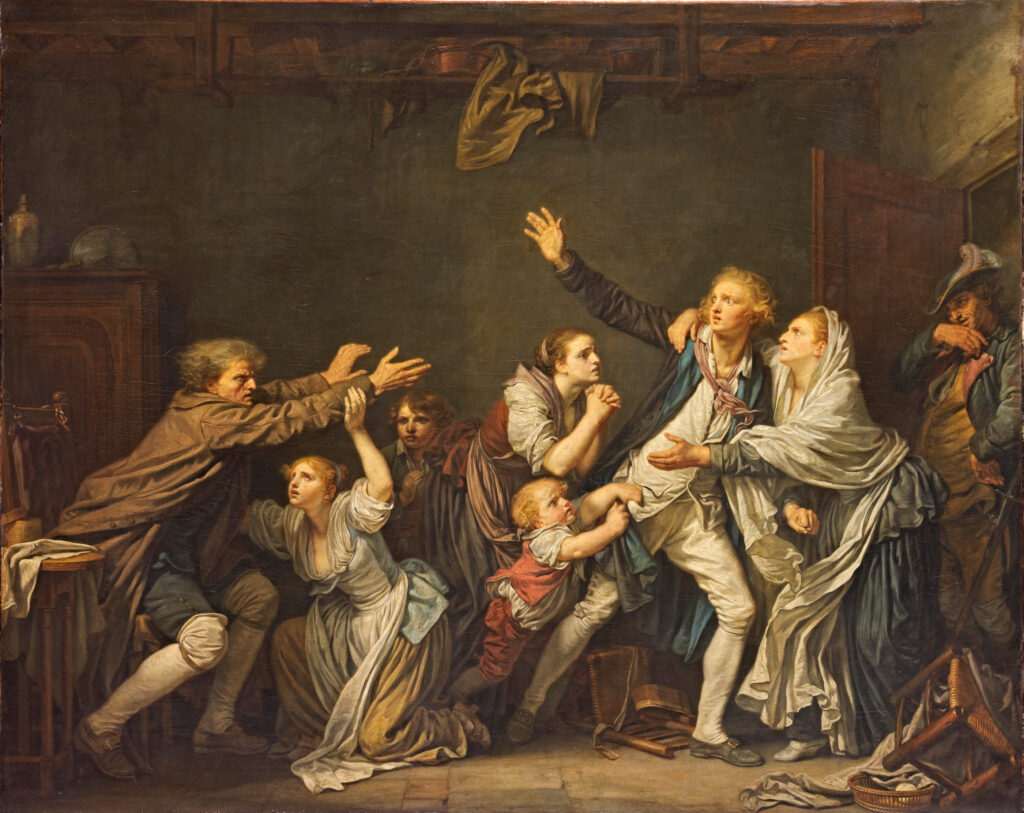
Jean-Baptiste Greuze, The Paternal Curse: The Ungrateful Son, 1777, Oil on canvas, Louvre Museum. Photo: Michel Urtado.
In “Childhood Illuminated,” Greuze’s vision of childhood and family life seems far from rosy. The happiness of the children in The Twelfth Night Cake (1774), featuring the French tradition of eating a special “king cake” on Epiphany (January 6), is an exception, as is the portrayal of a middle-aged and well-groomed father. The diptych composed of The Paternal Curse: The Ungrateful Son (1777) and The Punished Son (1778) is more representative of Greuze’s art and evokes nineteenth-century melodrama. Who is worse, the prodigal son or the tyrannical father, who in the second painting has just died? Greuze’s fathers are almost always decrepit or moribund. A father who still had some life in him was of little interest to the artist.
Greuze’s images of children show him at his best. Portrait of Charles-Etienne de Bourgevin de Vialart, Comte de Saint-Morys (ca. 1782–84) captures a self-possessed child, his elbow on an open book. The boy survived the French Revolution, perishing in a duel in 1817. Greuze agreed with Diderot, Rousseau, and Condorcet on the importance of parental love and of breastfeeding for both the child and the mother, as a painting of a nursing woman, known as The Happy Mother (ca. 1766), indicates. Nevertheless, Greuze’s own two daughters, like Rousseau’s children, were sent out of Paris to be wet-nursed.
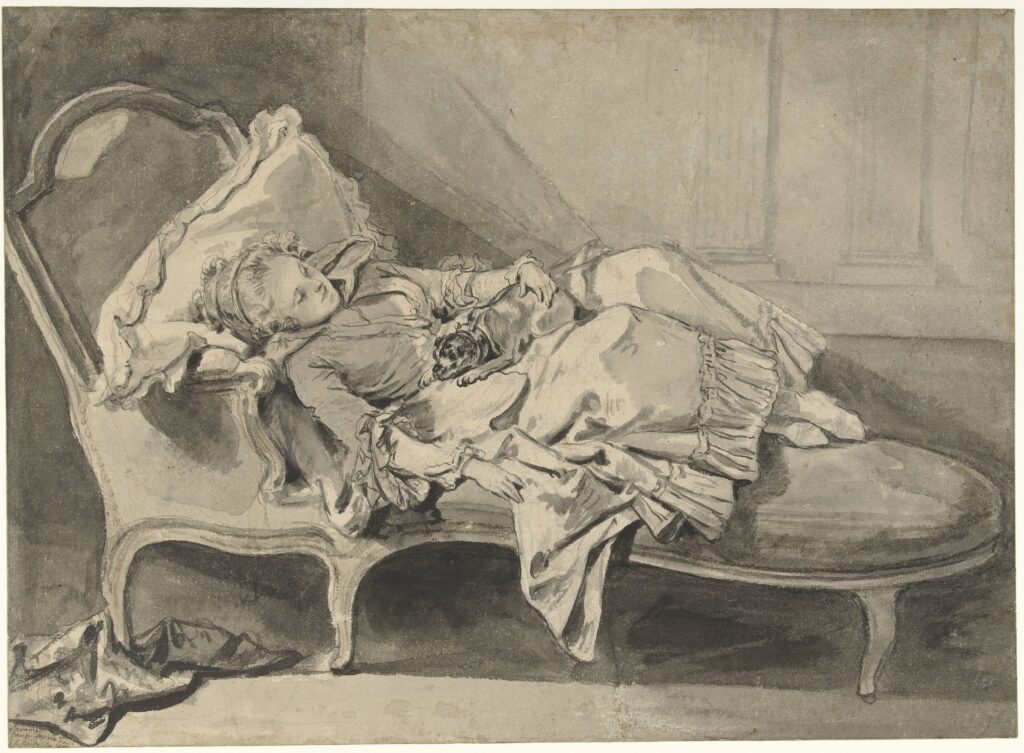
Jean-Baptiste Greuze, Madame Greuze on a Chaise Longue with her Dog, 1759-1760, Pencil & ink on paper, Rijksmuseum, Amsterdam.
The exhibition opens with Greuze’s self-portrait (ca. 1760), painted with broad, confident strokes early on in his successful career. Next to it is his gentle pencil sketch (1759–60) of his resting wife, shown reclining on a chaise longue with her dog. Their marriage was rarely so peaceful. Greuze’s wife, Anne-Gabrielle Babuty, the daughter of a successful bookseller, worked with him and the engraver Jean-Georges Wille to promote her husband’s engravings. Diderot wrote that the frequent arguments between Greuze and his wife resembled Punch exchanging blows with his consort. In the 1780s, when Greuze’s art went out of style, Greuze accused his wife of having numerous lovers and stealing his earnings when she destroyed their records. “I have no accounts to give you,” she replied. They divorced in 1793 during the revolution.
Whatever one thinks of Greuze’s moralism, his use of color in portraits is bound to please. This study of a once highly regarded and innovative master who subsequently fell into relative obscurity may well earn Greuze some new admirers.

